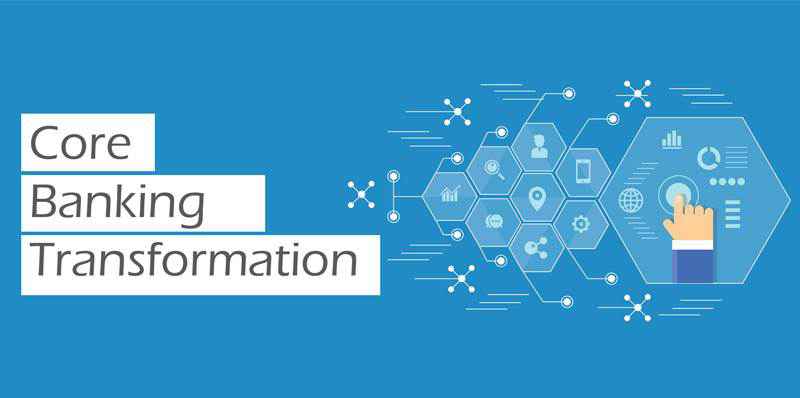The inside story on transforming core banking systems
Updated On : June 2018
Core banking transformation is kicking up a storm across the globe. With technology changing rapidly, Core Banking System renewal, which earlier was done once in every six to eight years, is becoming more frequent and considered the need of the hour.
Core banking transformation is, of course, a complex procedure. Successful transformation considers the fundamental elements of people, culture and change management. A range of external factors compound the task of acclimating these vital mechanisms; today’s progressing regulatory environment, eccentric and disruptive industry novices, and ever-tighter operating margins.
Core banking transformation either replaces, upgrades or outsources a bank’s CBS (which is made up of integrated software applications), the backbone of a bank’s IT infrastructure. Core system transformation can bring in critical changes like smarter banking, lower costs and higher revenues.
The core banking solutions that have been technologically advanced in the last decade have mainly focussed on getting digital channels together along with increasing scalability and flexibility. With the new age of core banking solutions in the market, it will become easier for banks to bring in different products and adapt to new customer expectations faster. This is crucial nowadays as banks face their own challenges trying to tackle social networking, mobile, cloud, and collaborative technologies.
Need for Core Banking transformation
A lot of banks are taking the help of technology to balance cost cutting with smart revenue growth. They intend to transform their core banking platforms which would help reduce back office expenses, and also expand and improve their customer relationships, creating opportunities for new revenue streams. A whole lot of leading financial institutions are in the process of continuous core upgrades to prioritise their customers’ needs, which would help in increasing cross-selling and up-selling of products. Here, product offerings are customised to specific customer profiles and needs, and the sales team is supported by advanced customer relationship management tools. These banks also have a unique pricing model which is based on both the customer’s profitability and profile and a fee model which is linked to value-added services.
As a result, these banks can look forward to -
- Boosting profitability and customer loyalty
- Enhancing Scalability
- Improving Security
- Standardized Operations
- Reducing Potential Risk
- Increasing Efficiency
Given the amount of internal factors and external pressures involved, transformation demands support from a partner with a proven record of strategy excellence and flawless execution. That partner must be one you trust to be independent and impartial in technology recommendation and passionate about delivery.
The challenges of Core Banking Transformation
- Going in for core banking transformation is a complex decision as one of the biggest deterrents is the huge cost of implementation. There are also other costs like licensing fees and annual maintenance costs.
- It is a challenge for the top management to make significant investments over an extended duration and manage the transformation as the pay-off period can be long.
- A lot of banks still use very old low cost technology compared to the new core systems. Hence the initial digital transformation cost to change over to a new core system could be perceived as very high.
- While bringing in new core banking systems , it is important for banks to take stock of their objectives and plan out the business process reengineering required for efficient operations. This would ensure better bottom lines and also raise customer satisfaction levels due to enhanced experiences across various channels.
- While system consolidation and better operations have led to transformations, leading banks realise the need to build a business case for generating sustainable revenues
However, core banking transformation improves competitiveness by enabling banks to time to market for new innovative products which increases market share and provides an edge over competitors.
5 ways core banking transformation is bringing in a change –
- It allows a holistic view of customer relationships through a single client database and a business model based around customers.
- Core Banking Transformation helps in decoupling product conceptualization and distribution while it provides a multi-layered architecture that splits up processes, functions and applications, thereby allowing greater agility for the business lines.
- It facilitates integration of the rules engines to empower system flexibility for document management and various other functions.
- Being a technology platform that is database agnostic, it enables a cost efficient technology base for future digital expansions
- It enables straight-through processing and real-time capabilities which are instrumental in reducing costs.
The above data used on the basis of the non-financial transactions/usage provides very useful insight to decide on the most crucial outcome of credit scoring; should the credit be extended or not. It can be even more useful if it is complimented with financial data. The combined effect of the two is sure going to change the way credits are offered, very soon. And we can conclude saying that “All data is credit data”.
Leave Comments :
Latest Blog
-
 Driving Rural Financial Inclusion with Lending Management Software Updated
On : June 2025
Driving Rural Financial Inclusion with Lending Management Software Updated
On : June 2025
-
 The Rise of AI in Credit Risk and Lending Software Updated
On : July 2025
The Rise of AI in Credit Risk and Lending Software Updated
On : July 2025
-
 Green Lending: ESG Metrics Embedded in Lending Software Updated
On : July 2025
Green Lending: ESG Metrics Embedded in Lending Software Updated
On : July 2025
-
 The Role of Blockchain in Modern Lending Management Software Updated
On : July 2025
The Role of Blockchain in Modern Lending Management Software Updated
On : July 2025
-
 Ensuring Compliance in Loan Origination Software Updated
On : June 2025
Ensuring Compliance in Loan Origination Software Updated
On : June 2025



Comments :